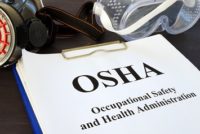Safety 2019: Successfully Navigate Your Next OSHA Inspection
If OSHA knocked on your door, how would you respond? Would you throw open the doors to your facility and give the inspector free reign, or would you demand that the inspector obtain a warrant before entering? That decision—and the many others that take place throughout the course of an OSHA inspection—can have a major […]









